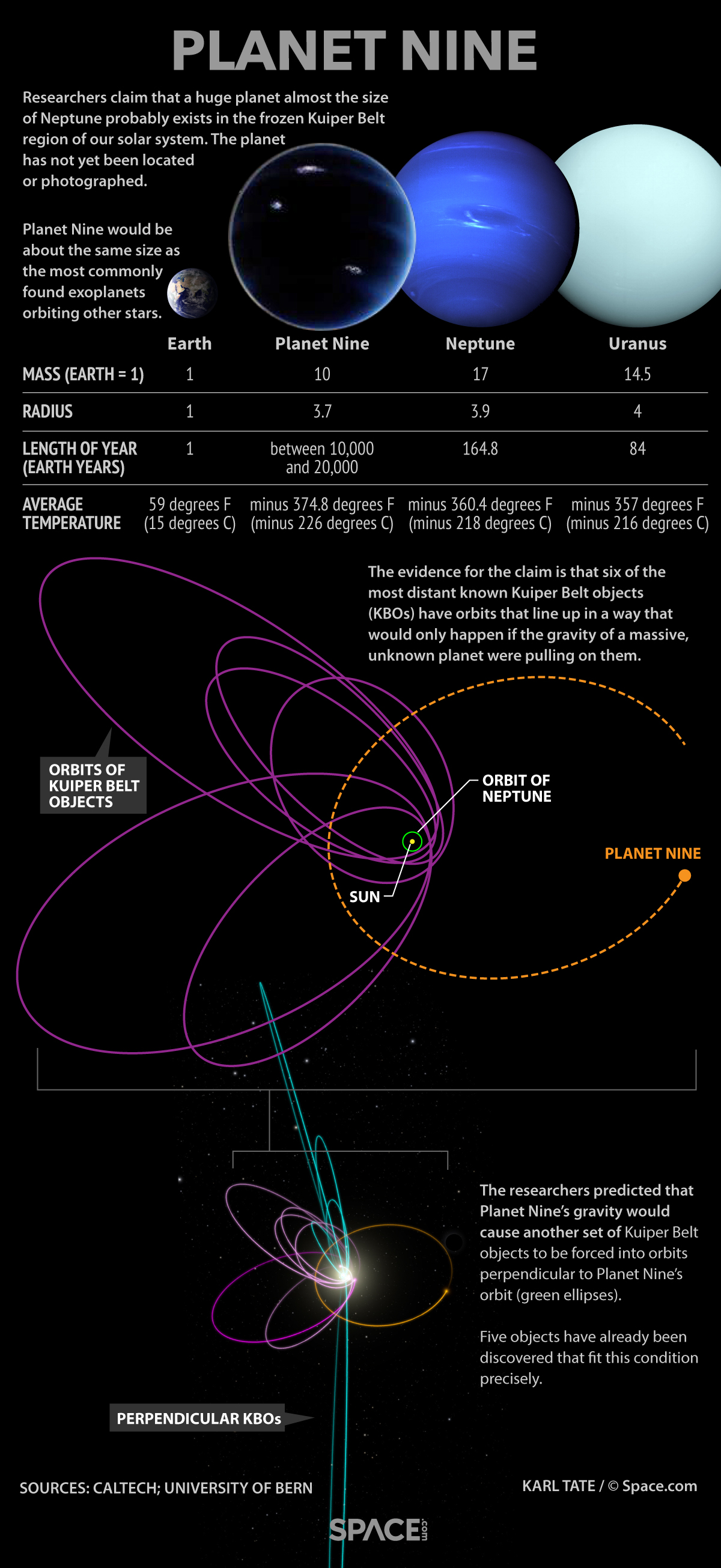Don't Blame 'Planet Nine' for Earth's Mass Extinctions

Life on Earth has little to fear from the hypothesized Planet Nine, astronomers say.
Some scientists have suggested that a big undiscovered body lying on the far outer reaches of the solar system could be responsible for many of the mass extinction events throughout Earth's history, by shaking up the distant comet repository known as the Oort Cloud and sending some its denizens screaming toward our planet.
But Planet Nine — a newly proposed but not yet confirmed world perhaps 10 times more massive than Earth that's thought to orbit far beyond Pluto — probably could not have triggered such "death from the skies" events, researchers said. [Evidence Mounts for Existence of 'Planet X' (Video)]
"I suspect it has something like zero effect on us," said Mike Brown of the California Institute of Technology (Caltech) in Pasadena.
Brown and lead author Konstantin Batygin, also of Caltech, suggested the existence of Planet Nine in a paper that was published last week. They infer the planet's presence based on indirect evidence: Computer models suggest that a distant, unseen world has shaped the strange orbits of a number of small objects in the Kuiper Belt, the ring of icy bodies beyond Neptune.
Planet Nine likely has an elliptical orbit, coming within 200 to 300 astronomical units (AU) of the sun at its closest approach and getting as far away as 600 to 1,200 AU, Brown said. (One AU is the distance from Earth to the sun — about 93 million miles, or 150 million kilometers).
Neptune orbits about 30 AU from the sun, and Pluto never gets farther than 49 AU from our star. So Planet Nine, if it exists, is very distant indeed — but not distant enough, Brown said, to stir up any of the trillions of comets in the Oort Cloud, which begins perhaps 5,000 AU from the sun.
Breaking space news, the latest updates on rocket launches, skywatching events and more!
The existence of such a "perturber" has been hypothesized as a way to explain the mysterious periodicity of big extinction events on Earth, which have recurred roughly every 27 million years over the last quarter-billion years or so.
"Really big planets really far away could do that," Brown told Space.com. "Planet Nine is smaller than all these things that people have called 'Planet X' — that's always been sort of Jupiter-sized, or even brown dwarf-sized, or something. This is a good bit smaller, and a good bit closer; it's not in the realm of the comets."
The putative Planet Nine also completes one orbit every 10,000 years or so, he added.
"That sounds like a long time, but it's a pretty short orbit," Brown said. "If it were doing this thing every time it went around the sun, it would've been doing a lot of it, and I don't think there's anything going on like that."
Astronomer Scott Sheppard of the Carnegie Institution for Science in Washington, D.C., who is not part of the Batygin/Brown team, voiced similar sentiments. (Sheppard is conducting a hunt for undiscovered objects in the outer solar system; he co-discovered 2012 VP113 — one of the "trans-Neptunian objects," or TNOs, whose orbital characteristics hint at the existence of Planet Nine.)
If Planet Nine exists, it could conceivably dislodge some TNOs (not Oort Cloud comets) and send them toward the inner solar system, Sheppard said.
"But most likely, the unknown massive object has been out there a very long time and thus cleared most objects near it long ago," Sheppard told Space.com via email.
"I do think it could throw a few small objects into the inner solar system every so often, but I don’t think it would significantly increase the odds for a mass extinction event," he added.
Scientists have advanced other possible explanations for the mass-extinction pattern on Earth. For example, some researchers have suggested that a small star (dubbed "Nemesis") or brown dwarf in the sun's cosmic neighborhood could be shaking up the Oort Cloud on a regular basis. But astronomers have not yet spotted signs of such an object, despite a concerted search effort using NASA's Wide-field Infrared Survey Explorer spacecraft and other instruments.
Other scientists have posited that the extinction pattern is a residue of the solar system's trek around the galaxy. Every 27 million years, this idea goes, the solar system travels through the Milky Way's dense midplane, and the resulting gravitational jostles nudge some Oort Cloud comets toward Earth and the other inner planets.
Follow Mike Wall on Twitter @michaeldwall and Google+. Follow us @Spacedotcom, Facebook or Google+. Originally published on Space.com.

Michael Wall is a Senior Space Writer with Space.com and joined the team in 2010. He primarily covers exoplanets, spaceflight and military space, but has been known to dabble in the space art beat. His book about the search for alien life, "Out There," was published on Nov. 13, 2018. Before becoming a science writer, Michael worked as a herpetologist and wildlife biologist. He has a Ph.D. in evolutionary biology from the University of Sydney, Australia, a bachelor's degree from the University of Arizona, and a graduate certificate in science writing from the University of California, Santa Cruz. To find out what his latest project is, you can follow Michael on Twitter.

